On our latest trip to Japan, we went all the way down to Kyushu, to visit a less travelled area of the country. We were looking forward to seeing something new and a bit different. One of the places we visited was the city of Fukuoka.
Fukuoka is Kyushu’s largest city. It’s actually one of Japan’s ten most populated cities! Because of its closeness to the Asian mainland (closer to Seoul than to Tokyo), Fukuoka has been an important harbour city for many centuries.

Today’s Fukuoka is the result of the fusion of two cities in 1889 when the port city of Hakata and the former castle town of Fukuoka were united into one city called Fukuoka. Hakata remains the name of one of Fukuoka’s central districts and of the main railway station, from where the Shinkansen trains arrive and depart.


I think Fukuoka is more for shopping and experiencing a Japanese city rather than for sightseeing, but still worth the time of any tourist. One thing that’s really appealing is that it offers all the shops you need in a smaller and more relaxed location than many of Japan’s other large cities.
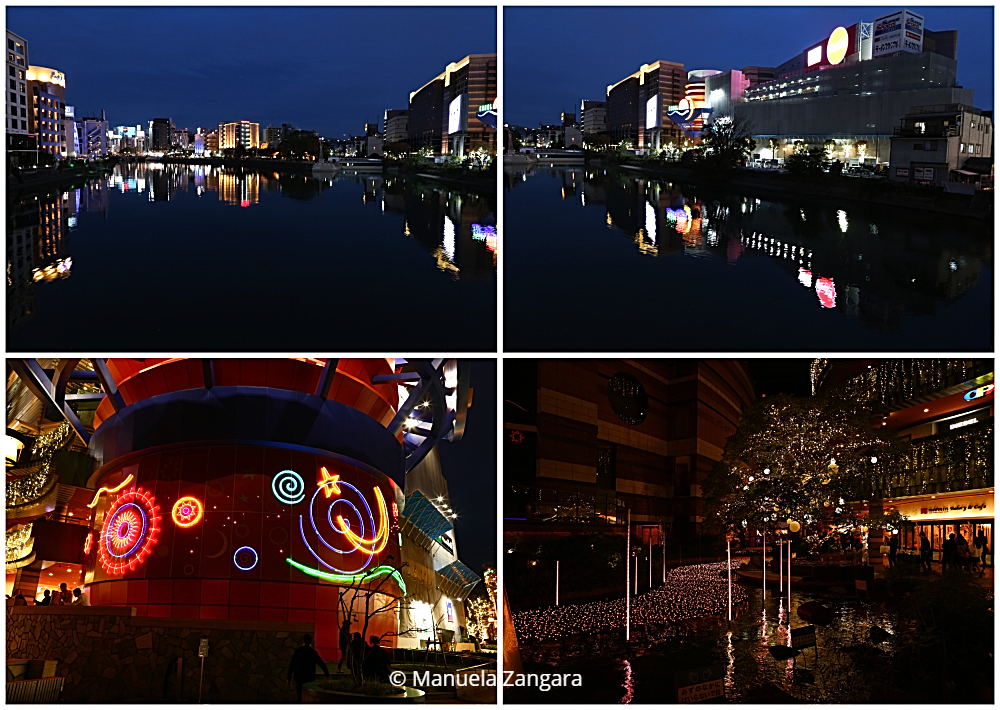
SIGHTSEEING
Unfortunately, we did not have a lot of time to explore Fukuoka. We were supposed to take an early train from Nagasaki, leave our luggage at Hakata station and go to Dazaifu. However, there were no seats on the early morning trains (make sure to reserve these ASAP if you need to travel early!) and we ended up arriving at noon! It was a rainy day too, so we decided to skip Dazaifu and take it easy.
All things considered, it was a good break from our hectic schedule and we got to enjoy life like the locals a bit.

Canal City
Canal City is a large shopping and entertainment complex, calling itself a “city within the city”. Attractions include about 250 shops, cafes and restaurants, a theatre, a game centre, cinemas, two hotels and a canal running through the complex.

It was particularly beautiful with its winter illuminations all lit up.

You can find almost everything here, from Japanese shops to international brands.

There is also a wide variety of restaurants, offering Japanese and international food. I had some delicious sushi here.

The fifth floor consists of the “Ramen Stadium”, which has eight ramen shops with noodle dishes from across Japan, including the local specialty Hakata Ramen.
The artificial canal runs right through the middle of the five storey entertainment complex. At the centre of the canal there is a fountain with water shows every 30 minutes from 10:00 until 22:00.


We were extra lucky because besides the “usual water shows”, we also got to see 2 “light shows”. A Christmas one, that included a fake Santa AND fake SNOW (this was AMAZING, especially for the kids!).

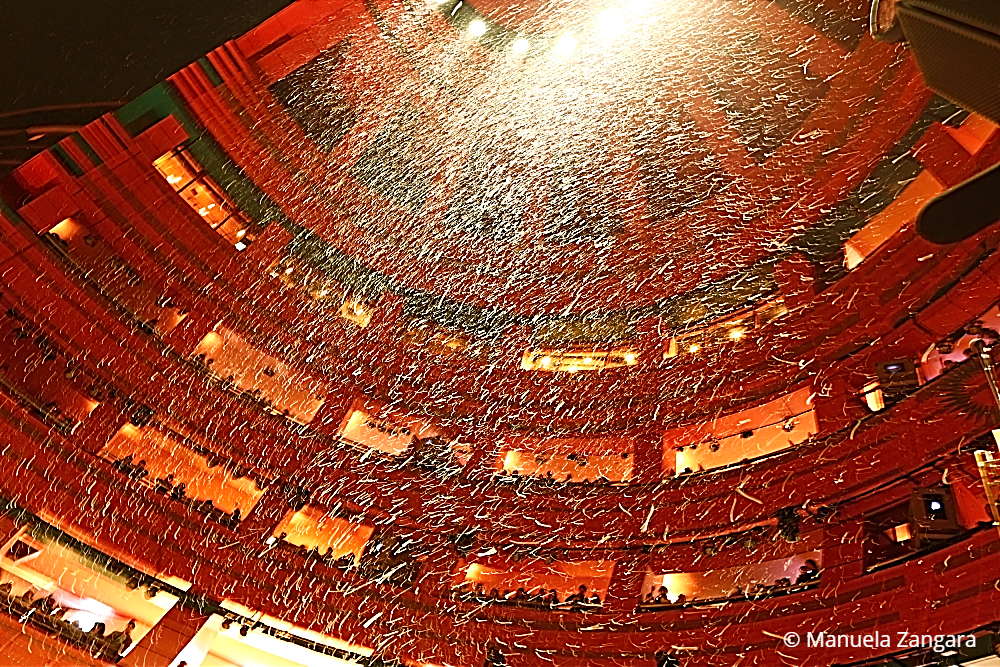
And a Godzilla one that my husband particularly enjoyed.

We also got to see a free concert by a famous Japanese band, called Cubers.

This was fun, people seemed to know all the songs and they were singing along too.

At the end of the show, you get to high five the band! 🙂
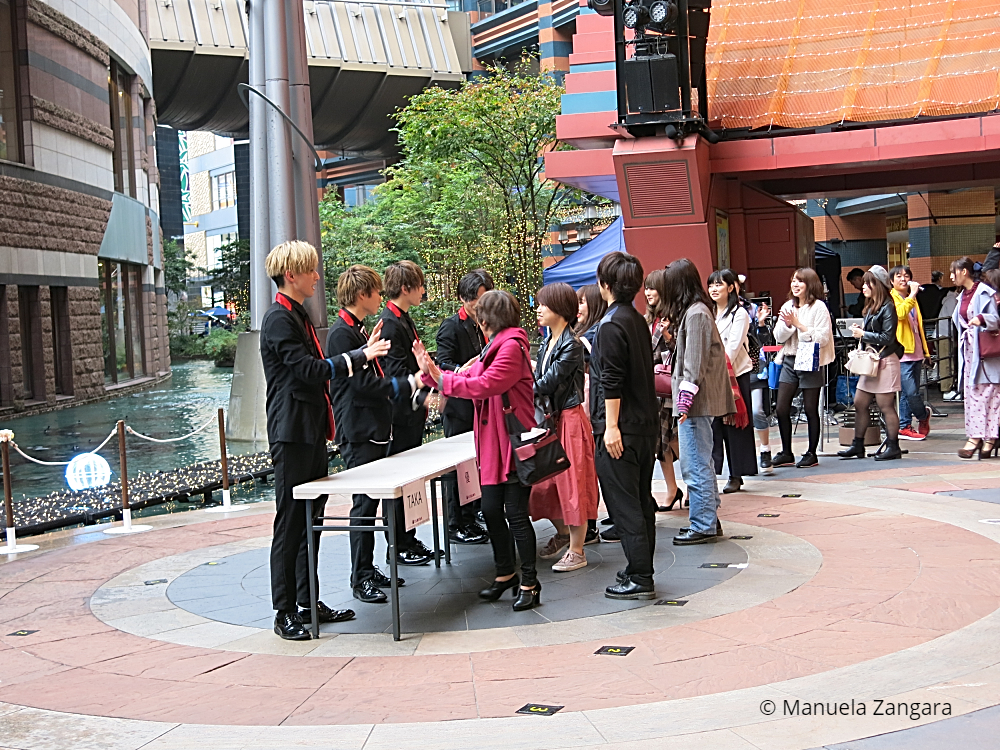
Seaside Momochi – Shīsaido Momochi
Seaside Momochi is Fukuoka’s modern waterfront located on reclaimed land along Hakata Bay. The area was originally developed as the site of the 1989 Asia Pacific Expo and was designed with attractive, modern features such as wide, tree lined streets, futuristic buildings like the Fukuoka Tower, public parks and no phone or electricity lines above ground.
Unfortunately, we couldn’t see it.
Tenjin
As Fukuoka’s best shopping area, Tenjin is home to the beautiful department store Iwataya, along with many other shopping outlets, restaurants and yatai food stalls. The stylish Tenjin underground shopping mall was created in the image of a European city, and is so well-produced that no one would think it was underground if they didn’t already know. With more than 150 shops, it’s the perfect place to do some shopping and spend a rainy day without getting wet.
Dazaifu
Dazaifu is a little town not far from Fukuoka. It was established in the late 7th century and served as the administrative centre of the entire island of Kyushu for over 500 years.
There are a number of temples and shrines, the most famous of which is the Dazaifu Tenmangu Shrine, as well as sites related to Dazaifu’s role as the region’s administrative centre, such as the Government Office Ruins. In 2005 the Kyushu National Museum was opened to the public, making a great new addition to the city’s attractions.
FOOD
Yatai – Food Stalls
Fukuoka’s open-air food stands are the city’s best-known attraction, especially for foodies. Yatai can generally seat about seven or eight people and provide an atmospheric outdoor environment to enjoy various foods that are generally simple and filling.


There are many yatai in Fukuoka, but the best place to find them is on the southern end of Nakasu Island, very close to Canal City. Nakasu Island has a long row of around 20 yatai that are attractively situated along the water.
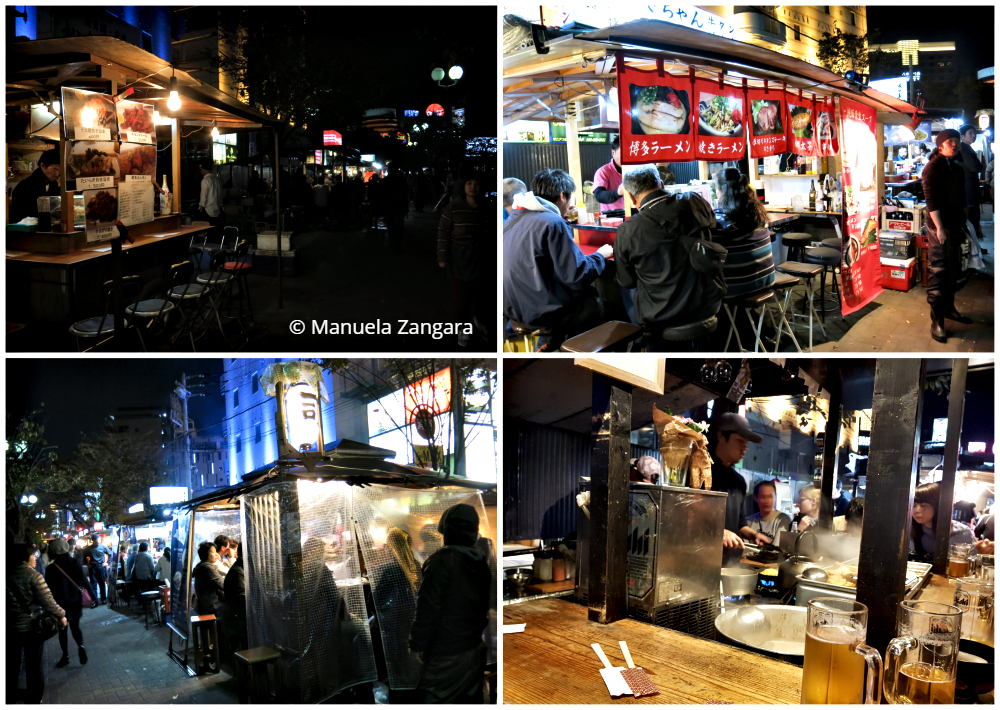
Typical dishes enjoyed at yatai are grilled chicken skewers (yakitori), hot pot (oden) and most famously Hakata Ramen, a local noodle dish featuring relatively thin ramen noodles in a pork bone based soup (tonkotsu).
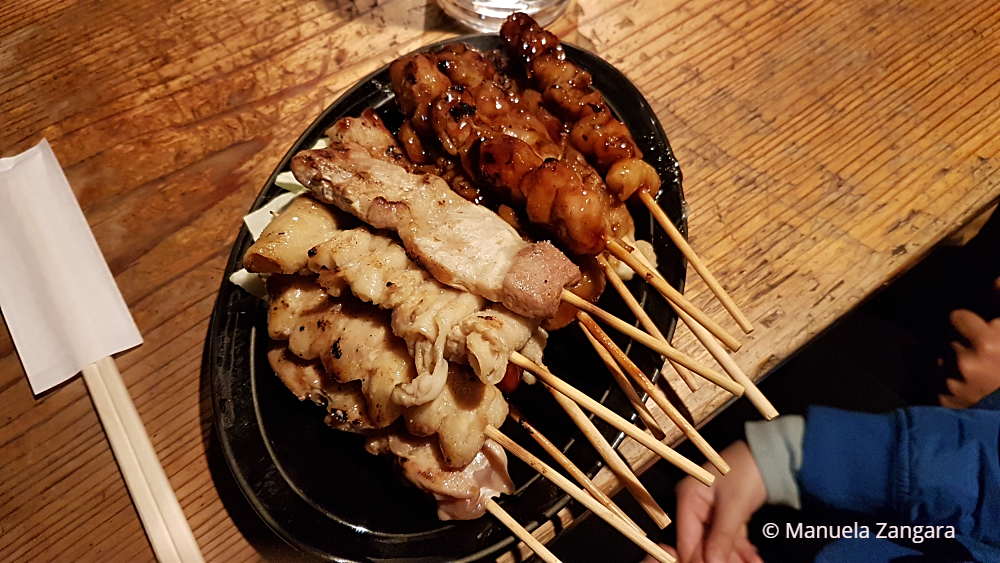
My husband also tried Chashu and Mentaiko Yaki Ramen, stir fried ramen noodles with pork and spicy pollack/cod roe. He absolutely adored it!

Various alcoholic drinks are also available and help make the yatai a great place to get in touch with the locals.

Yatai are typically open from around 6 pm to around 2 am, except when the weather is very bad. Many stands close one day of the week. The closure day varies from stand to stand, but is often Sunday. There can be waiting times for popular stands, especially on the weekend.
Hankyu Depachika – Hakata Station
A quick mention of this beautiful depachika. I had some AMAZING sushi here. Delicious and very well presented.

ACCOMMODATION
In Fukuoka, we slept at A Good Day Fukuoka Riverside.

The hotel is in a fantastic spot. It’s basically opposite Canal City and very close to a bus stop with direct buses to and from Hakata station.
The hotel is more like an aparthotel made up of serviced apartments and we LOVED it. The people at the reception are also very friendly.
We had a room for 4 people with 2 very comfortable queen beds, a kitchenette (with all the basic things you need).

There was also a HUGE bathroom. We also had a washing machine/dryer, which was helpful. The room was very nice and spacious for Japan.

The view of the river was very nice! This photo was taken at dawn.
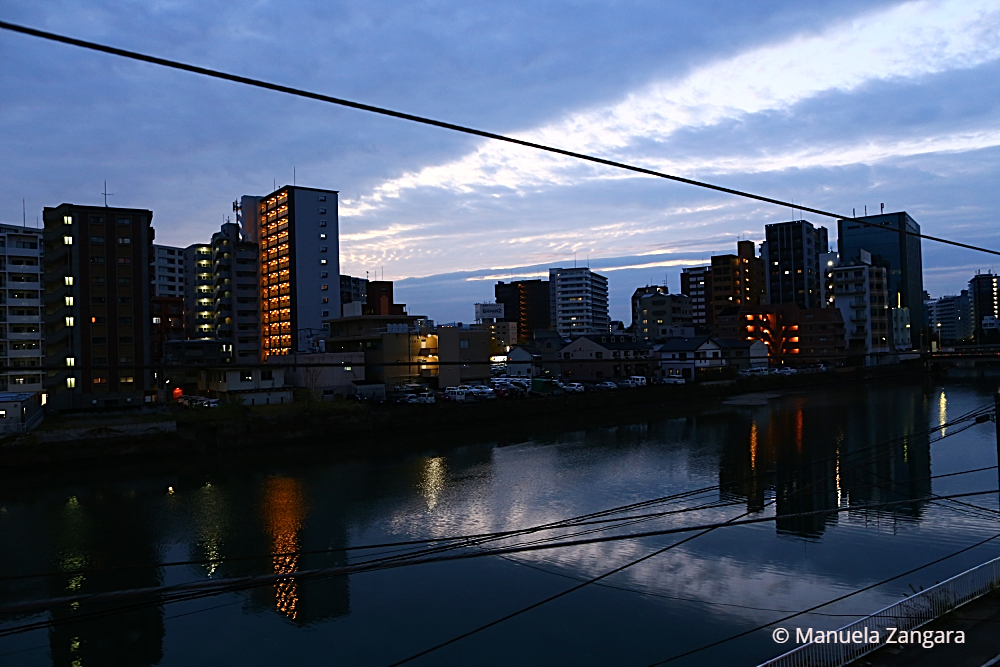
I booked this through Booking.com but I had also managed to communicate with the hotel through their Facebook page, which I found very useful.
I highly recommend A Good Day Fukuoka Riverside for its great location, friendly staff, and beautifully appointed room. We would be back.
HOW TO GET AROUND IN FUKUOKA
Subway
Fukuoka’s subway has three lines: the Airport Line, the Hakozaki Line, and the Nanakuma Line. A one-day pass is 620 yen for an adult, and they are sold at every station ticket counter.
Trains
JR trains operate out of Hakata Station, the transport hub for all of Kyushu. The Nishitetsu Tenjin Omuta Line – convenient for tourists going to Dazaifu Temmangu – leaves from Nishitetsu Fukuoka (Tenjin) Station in Tenjin. If you’re going to Dazaifu Temmangu, pick up a Nishitetsu roundtrip ticket from Fukuoka Station or Yakuin Station for 1000 yen (680 yen for children).
Buses
Nishitetsu busses leave from Hakata Station and the Tenjin area, and the 100-yen loop bus that runs between Hakata and Tenjin is great for tourists. You can get a one-day bus pass, limited to routes within the city, for 900 yen.
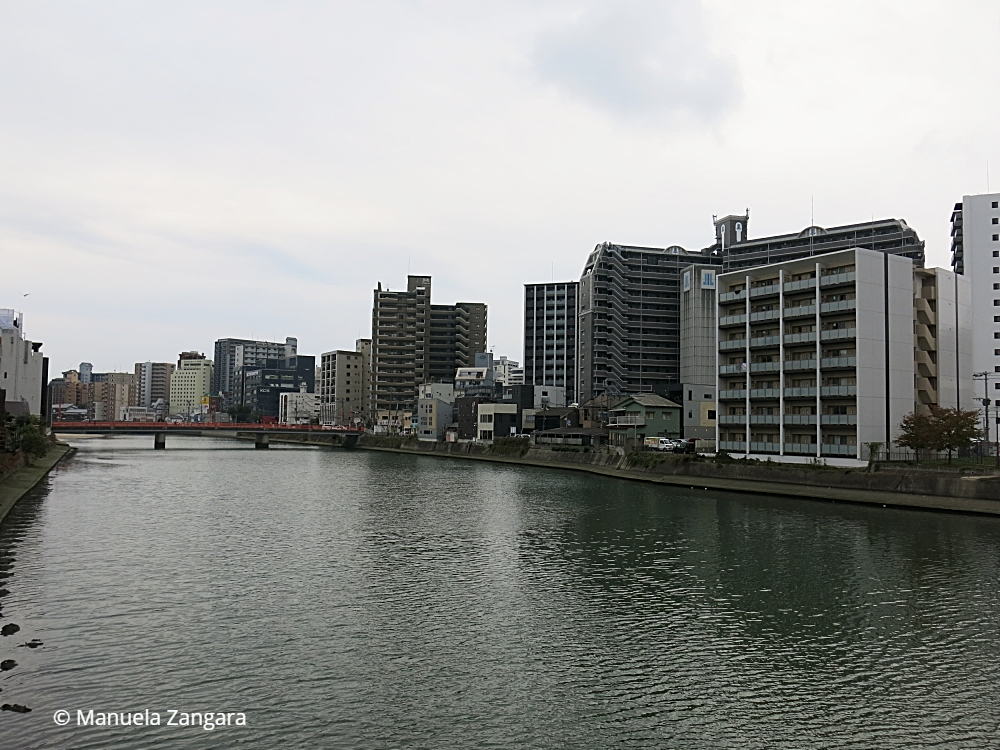
RESOURCES ON MSM
RECIPES:
TRAVEL IN JAPAN:
Nara & Fushimi Inari guide – Japan
Haru Cooking Class Kyoto – Japan Guide
Nagashima and Nabana no Sato – Japan Guide
Jigokudani Monkey Park Guide – Japan
Miyajima Autumn 2018 – Japan Guide
Don’t forget to pin this post!

HOW TO GET THERE FROM TOKYO
By train
Tokyo and Fukuoka (Hakata Station) are connected with each other by the Tokaido/Sanyo Shinkansen. The one way trip by direct Nozomi trains takes five hours. Japan Rail Pass holders cannot use Nozomi trains, and have to ride Hikari and Sakura trains instead. This adds about one hour to the total travel time and requires a transfer of trains at Shin-Osaka Station.
By air
Tokyo-Fukuoka is one of the world’s busiest air routes with dozens of departures per day, operated by JAL, ANA, Starflyer, Skymark, Peach and Jetstar Japan. Flight duration is about 110 minutes. Most flights use Tokyo’s Haneda Airport, but a few flights also use Narita Airport. Fukuoka Airport is Japan’s most easily accessible airport, only a five-minute subway ride from the city’s main railway station, Hakata Station.
By bus
Nishitetsu operates a daily night bus between Fukuoka and Tokyo (Shinjuku Bus Terminal above JR Shinjuku Station). The one-way journey takes 14.5 hours.





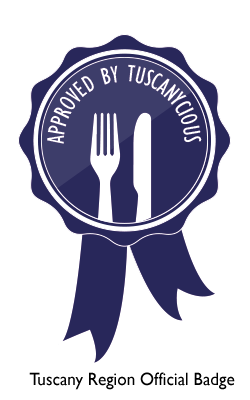












Leave a Reply